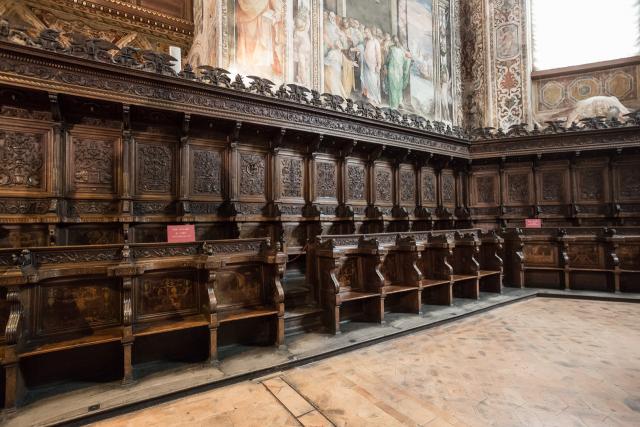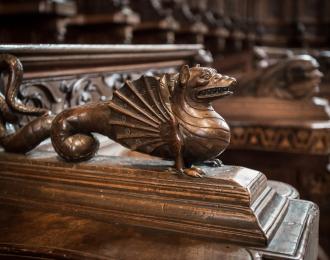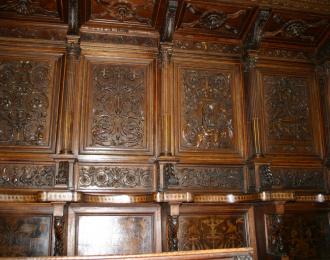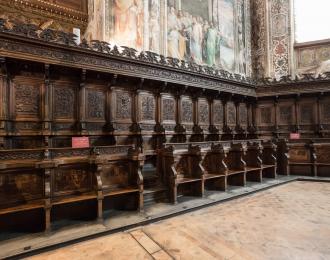Choir
San Pietro Museum Complex

Bernardino Antonibi; Stefano da Bergamo e frate Damiano da Bergamo
carved and inlaid wood
1526; 1533-1535
The choir is the cornerstone of the spiritual life of the monastic community and fills the entire area of the apse. It was, however, originally located in the central part of the church, and must have been surrounded by a wall structure decorated with paintings. The wall enclosure was taken down in 1591 and the choir was moved to its present location. This grandiose wooden structure was commissioned in 1526 from Bernardino Antonibi who died a few months later. In 1533 work was resumed by Stefano da Bergamo, who completed it in 1535 with the help of several Tuscan marquetry artists. The inlaid door (1536) at the end of the choir is the work of Brother Damiano da Bergamo. carries images of the Annunciation, The Childhood of Moses, The Martyrdom of Peter and Paul, and the Navicella (or Little Ship). The choir door provides access to a small balcony behind the altar which provides a marvellous view across the Valleys of Umbria towards Mount Subasio; the left side bears a dated signature by the poet Giosuè Carducci who was in Perugia in 1871.
The choir has two orders of stalls (40 on the upper level, and 28 on the lower). It has a complex iconographic plan based on episodes from the Old and New Testaments, intended to present important theological teachings in a clear didactic manner. The richness of the old styled ornamental themes (garlands, masks, eagles, cornucopias, grotesques), carefully inlaid, led to the assumption that Raphael was a strong inspiration: the Farnesina construction site in Rome was an unending source of decorative themes that were coined to a large degree by Giovanni da Udine, and widely divulged through drawings and etchings. The lectern is at the centre of the choir, where magnificent illuminated choral scores were placed. Many of these are conserved in the Historical Archives of San Pietro.


